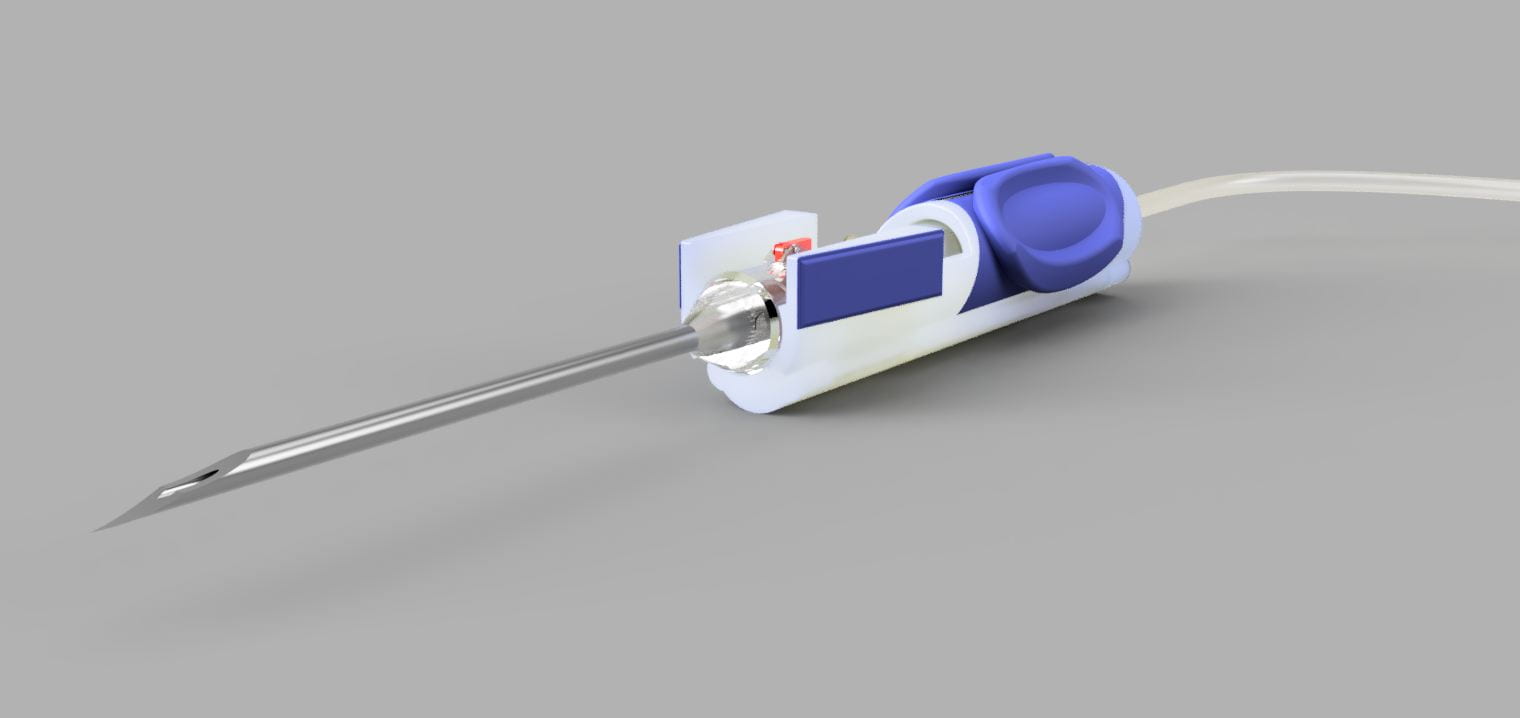Get to know our team on LinkedIN:
Emmanuel Cotto, Joshua Lindsey, Collins Sherrill, Camija Salic, Savi Agarwal
Big VEIN THEORY
Create Safe, stable, ergonomic venipuncture needle for improved efficiency and patient comfort.
This is Big Vein Theory’s prototype phebotomy needle. The needle includes a level bubble located on the upper part of the body as well as a safety release button that retracts the needle. On the wings a finger grip material covers where the user will place their thumb and finger. The same material used for the grip is located in the front of the rectangular section of the wings.
Project Description:
Venipuncture is the process in which blood is drawn from an intravenous site using a needle, vacutainer, and blood collection tubes. The standard process typically abides by the following steps: the phlebotomist identifies a suitable vein for sticking (typically from the antecubital fossa or the dorsum of the hand), applies a tourniquet to increase venous pressure, sticks the vein with a needle in a diagonal and forward manner, collects blood using the vacutainer and tubes, and finally removes the tourniquet and needle, applying bandaging as required.
Often, even after the initial stick successfully produces blood flow, the needle moves during sample collection and causes one of three complications: loss of the vein (causing the phlebotomist to remove the needle and stick the patient again), partial exit or further entry of the needle (causing patient pain and a hematoma), or blockage of the needle’s lumen within the vein (the lumen is partially or fully covered causing a decreased blood flow and hemolysis of the sample).
Currently, these issues are only partially addressed by holding the needle in place using one hand and changing tubes with another, which is difficult to maneuver and can cause further instability. Furthermore, the restraints on needle stability required by the procedure are unachievable with currently marketed devices, and without keen attention to needle position, there is potential for phlebotomists to experience the complications discussed. Therefore, phlebotomists need a device that can maintain fluid continuity despite perturbations for the entirety of venipuncture procedures.The goal of this project is to develop such a device by minimizing the risk of patient pain and injury during venipuncture procedures by addressing needle instability challenges.



